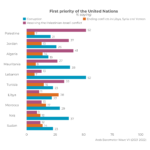Since 1946, the U.S. is estimated to have provided more than $346 billion dollars of assistance to countries in the Middle East and North Africa (MENA) region. This aid goes to a variety of causes, including military, humanitarian, and developmental causes. However, many ordinary citizens across the region hold suspicions about the true intent from Western countries like the United States. When surveyed in 2018-9, on average nearly half (47 percent) said the primary motivation for Western assistance was to gain influence in their country. By comparison, just 18 percent believed the main motivation is to promote economic development while 12 percent said it is to increase internal stability or improve the lives of citizens, respectively.
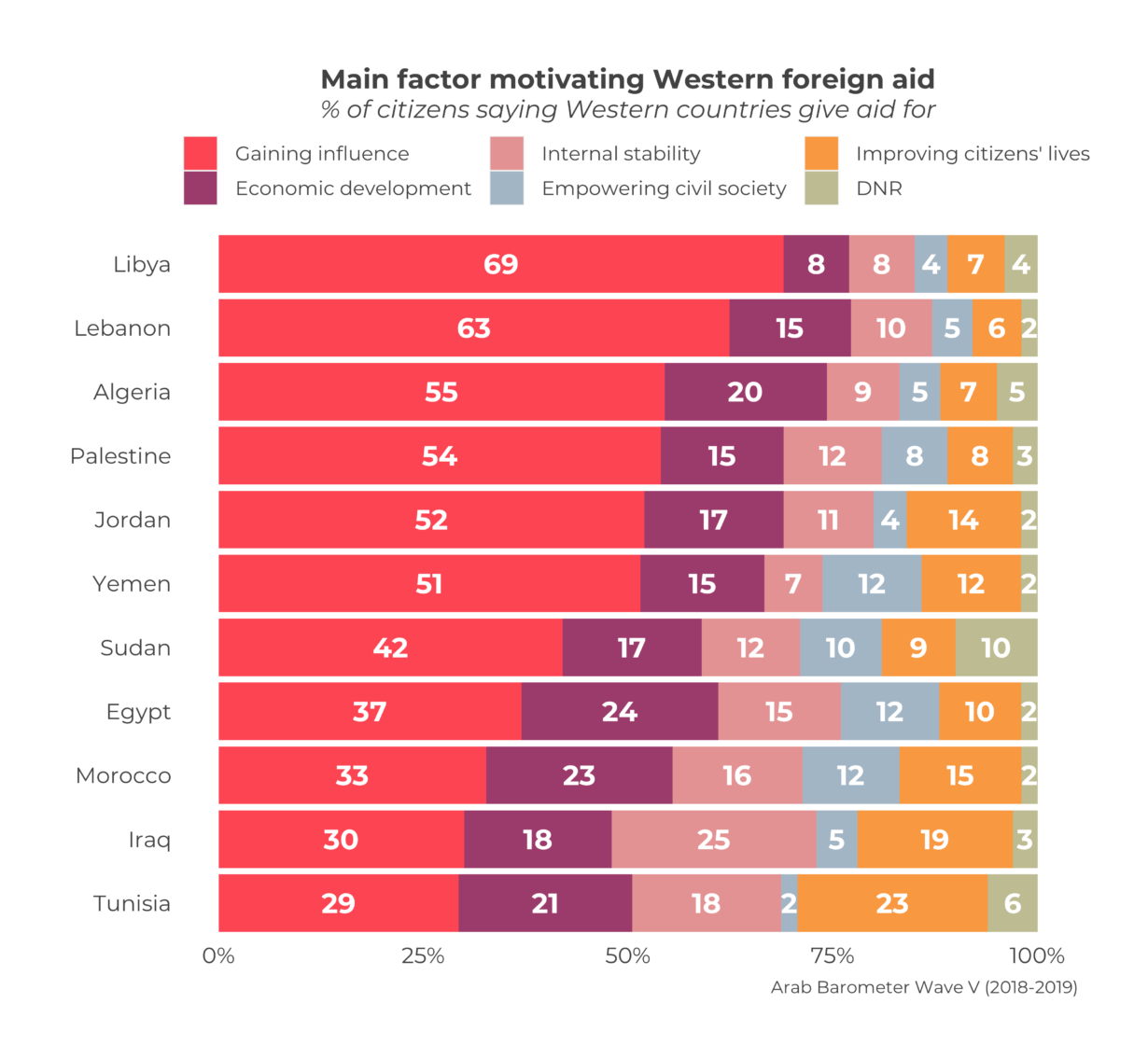
Nevertheless, many citizens across the region actually favored an increase in aid from the U.S. More than half of citizens in Jordan (69 percent), Sudan (63 percent), Lebanon (54 percent), Morocco (53 percent) and Egypt (52 percent) held this view, as did significant percentages in Palestine (49 percent), Iraq (48 percent), and Tunisia (45 percent). Only in Libya and Algeria did fewer than a third favor increased levels of assistance from the U.S.
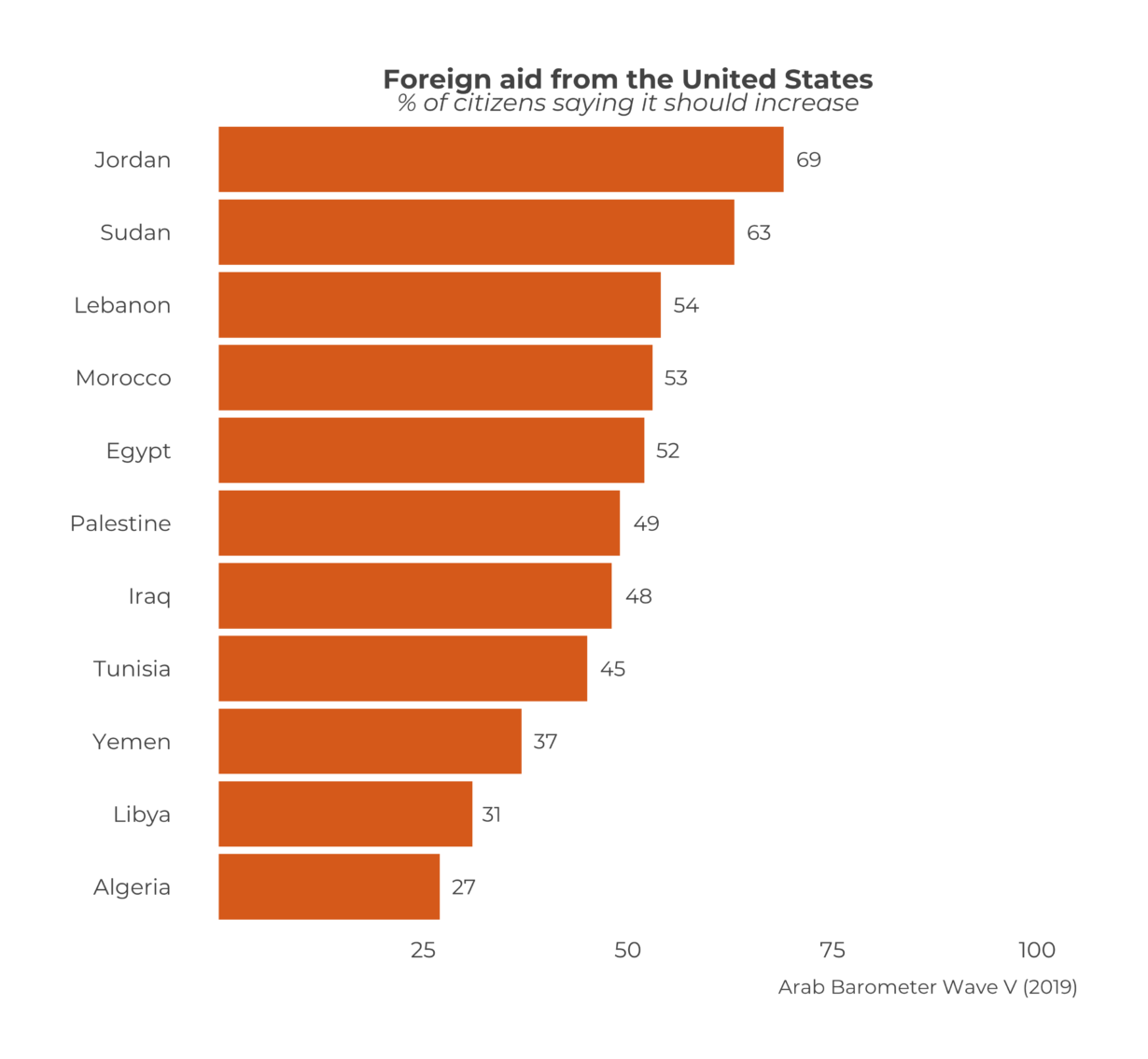
In part, this desire for more aid from the U.S. is likely a result of the fact that many citizens believe it is working for the benefit of their country. In surveys conducted in 2020-1, more than four-in-ten say that U.S. foreign assistance helps advance women’s rights in Lebanon (48 percent), Tunisia (45 percent), and Jordan (43 percent). Similarly, at least four-in-ten say U.S. assistance strengthens civil society in their country in Lebanon (50 percent), Tunisia (46 percent), Morocco (41 percent) and Jordan (40 percent).
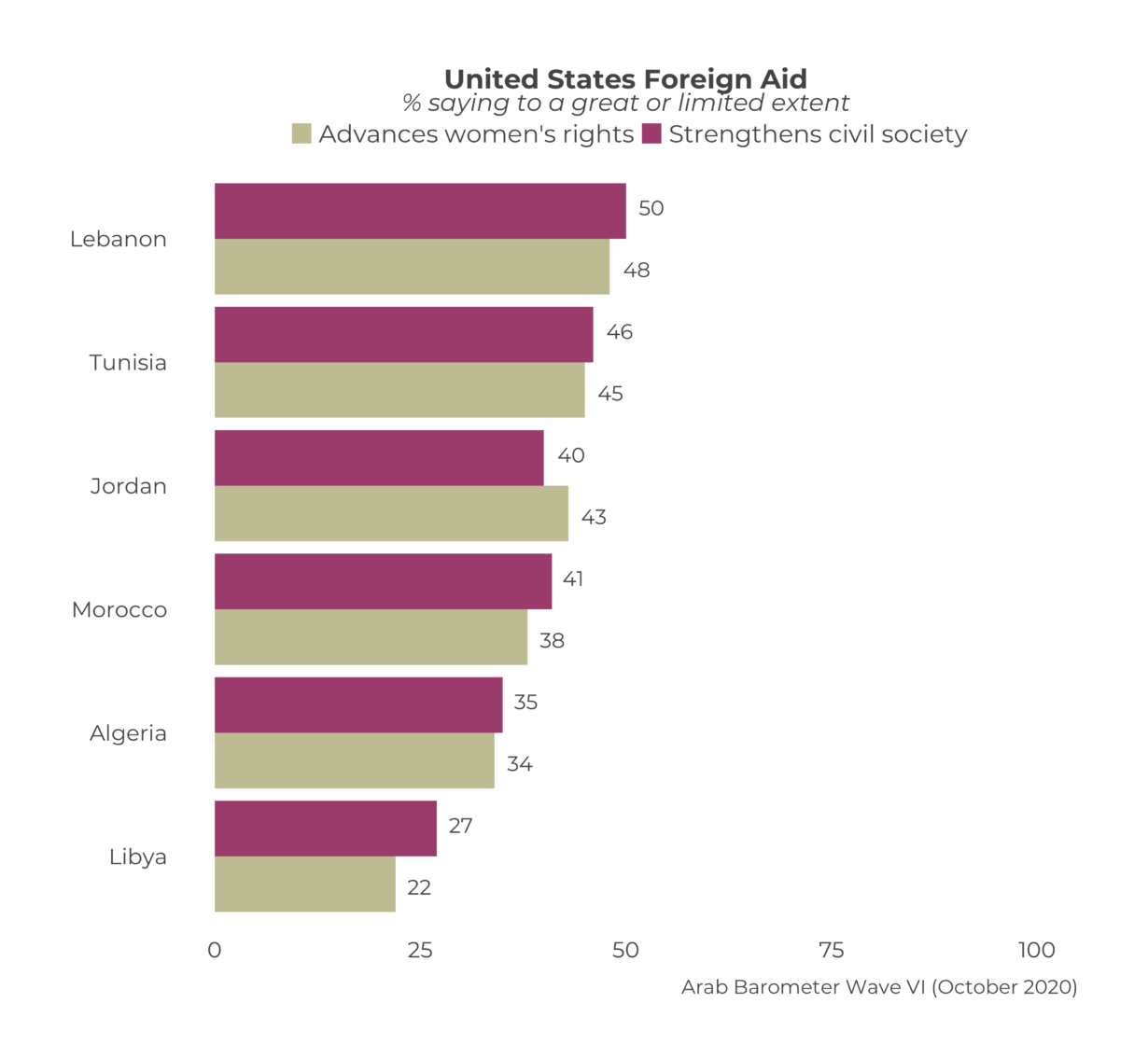
However, when asked about the most important areas for foreign aid, the most common response was improving education, including 45 percent in Morocco, 41 percent in Algeria, 40 percent in Libya, and 37 percent in Jordan. The second most common area was improving infrastructure, including 39 percent in Libya, 39 percent in Iraq, 29 percent in Tunisia, and 27 percent in Lebanon. By comparison, 15 percent or fewer in all countries surveyed think foreign aid should primarily target women’s rights. And, with the exception of Lebanon (20 percent), 11 percent or fewer in the countries surveyed prefer aid to target civil society.
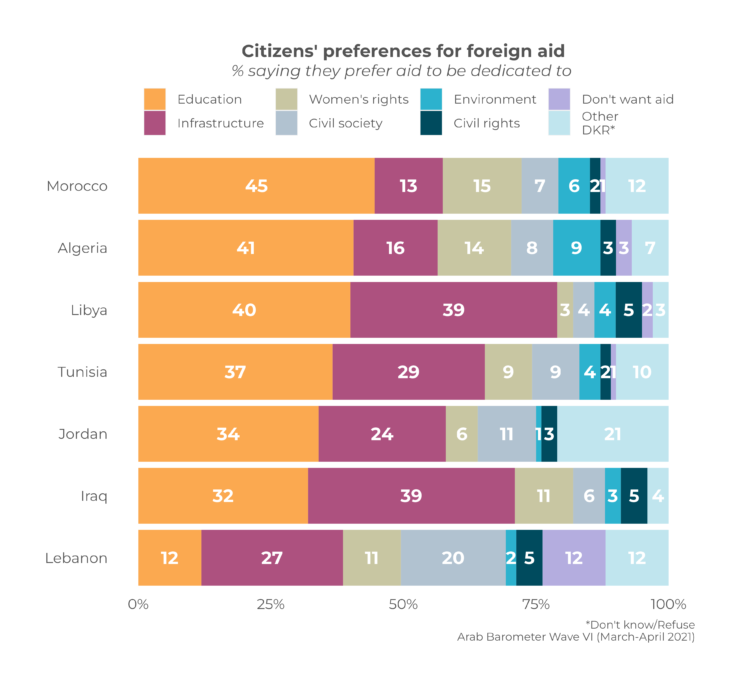
Overall, these results suggest citizens across MENA view U.S. assistance pragmatically. Although many are suspicious of the motivations of Western countries for providing foreign aid, there is relatively widespread support for increasing levels of assistance from the U.S. There is a sense that the aid does advance intended objectives, but also a belief that the aid should primarily be targeted to improving education and infrastructure, presumably to help improve economic prospects for individuals and their countries overall.

